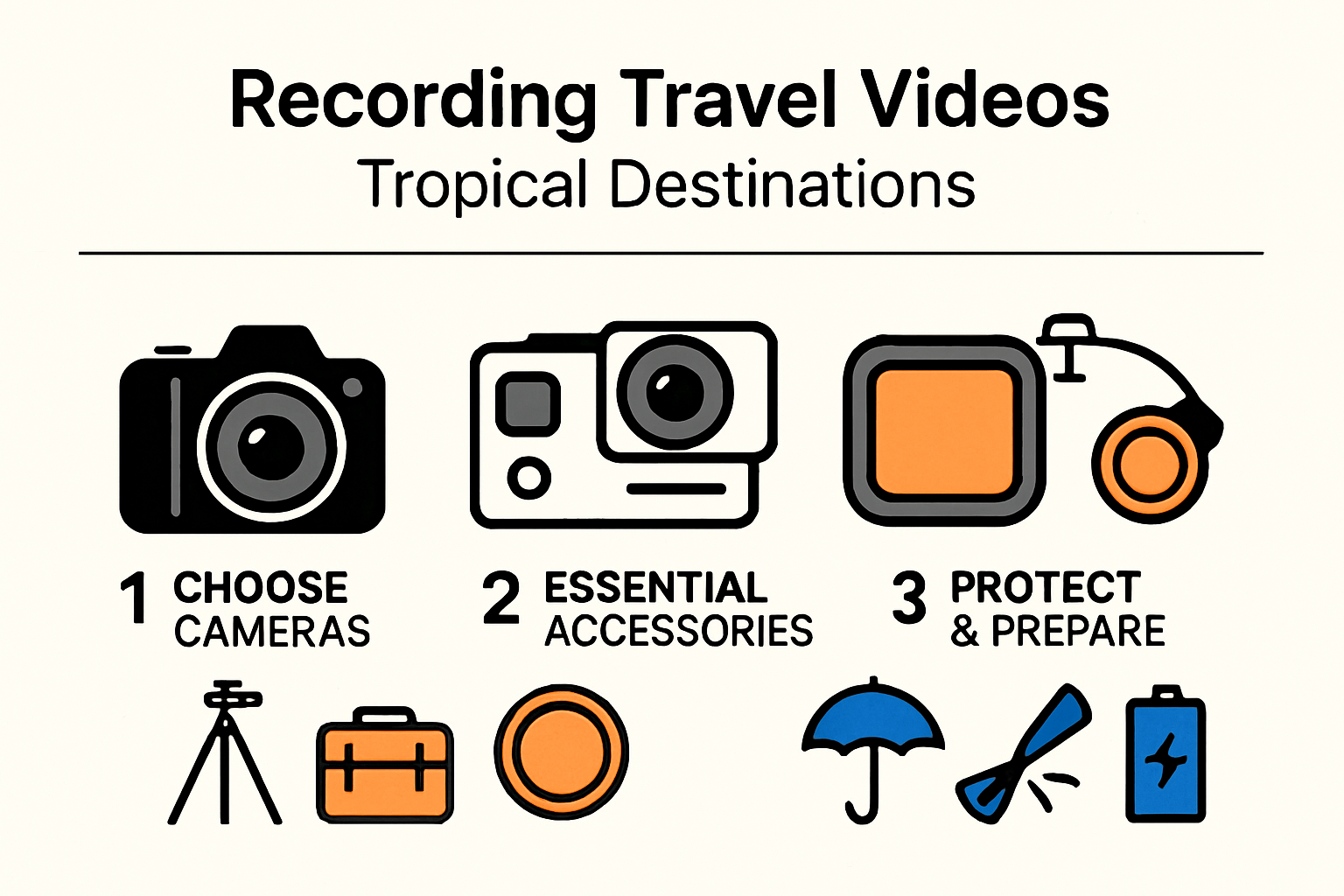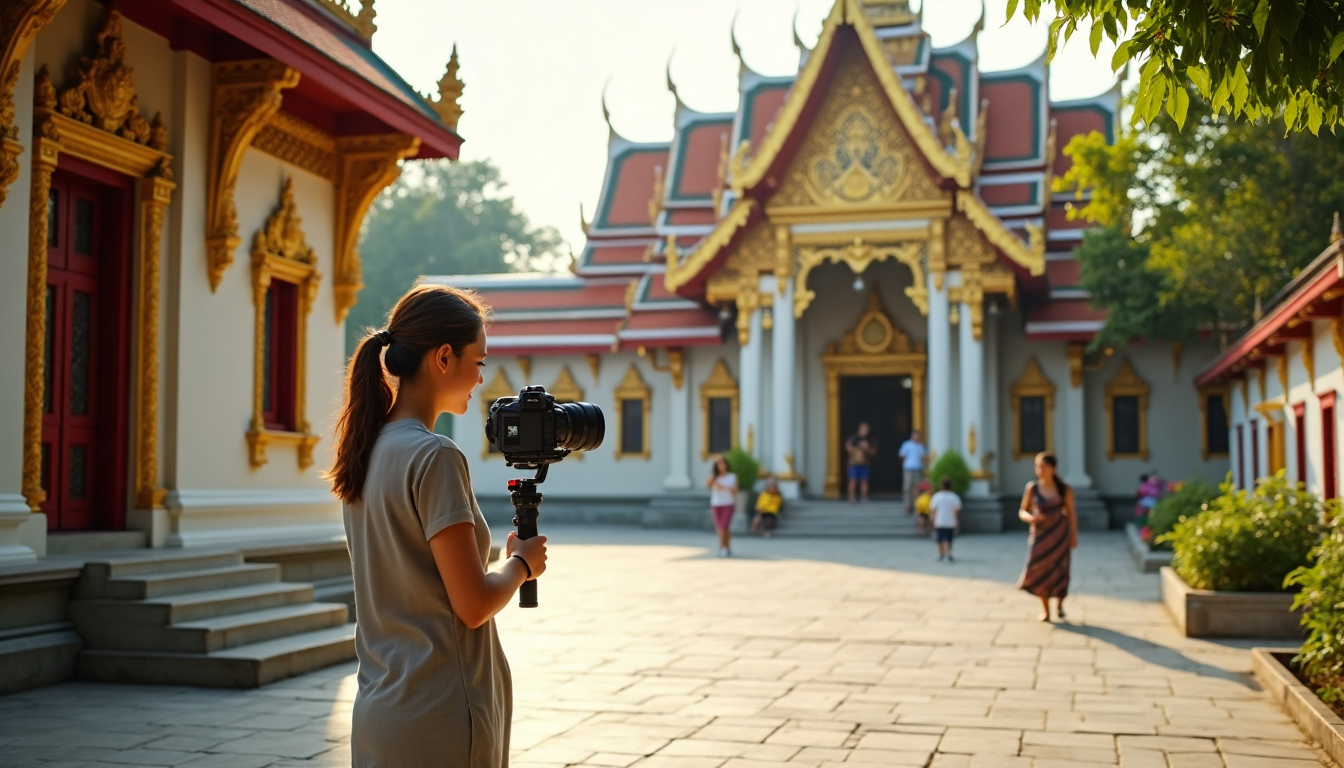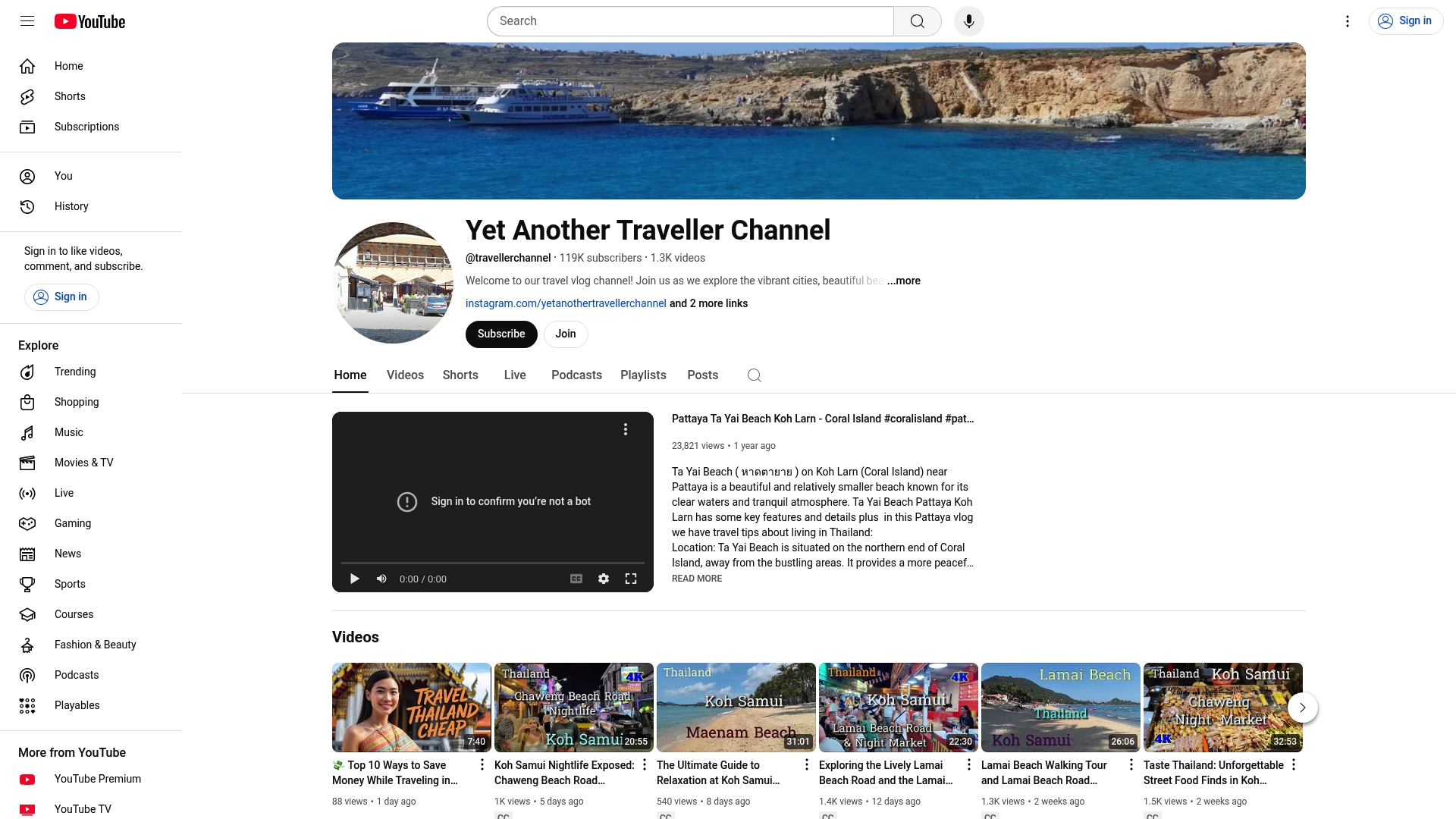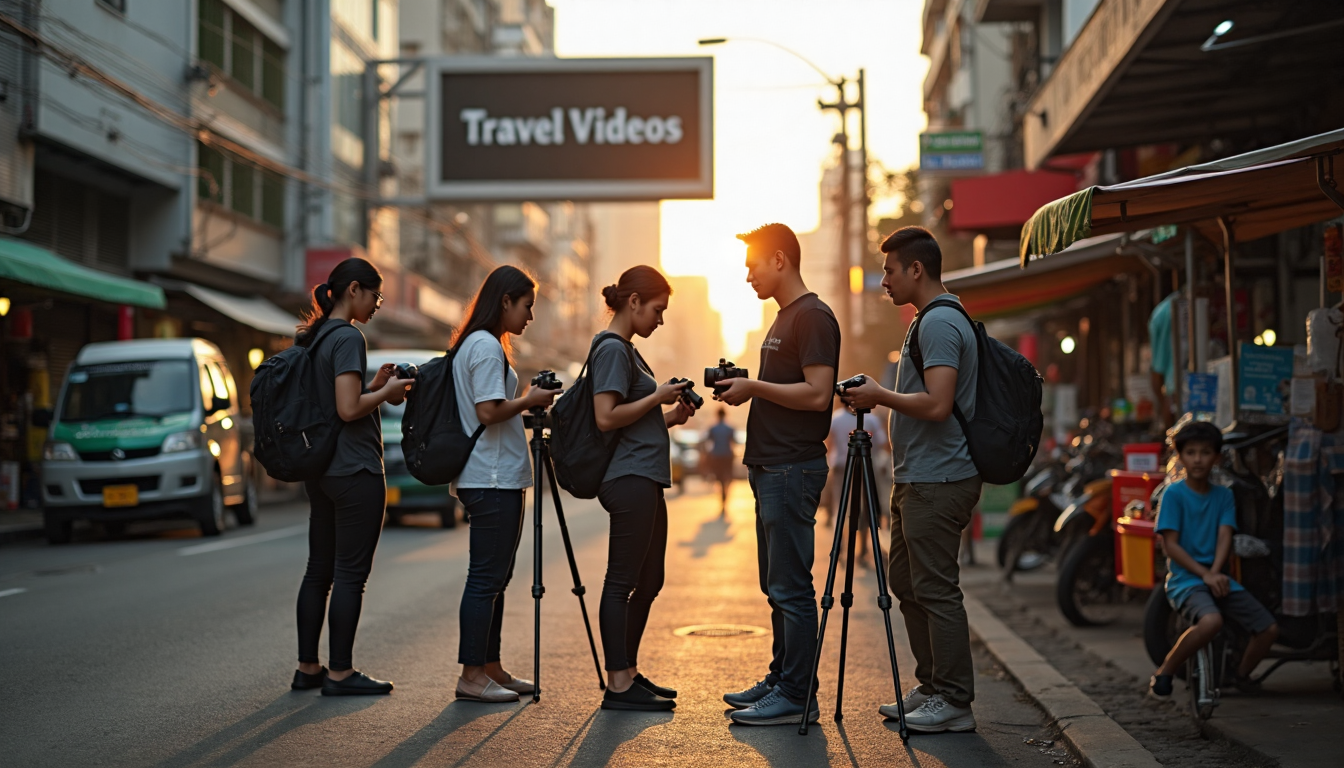
Filming travel videos in Thailand attracts thousands each year, but recent research shows that over 60 percent of tourists underestimate the legal and cultural rules around videography. You might think having the latest camera gear is enough. The real secret is knowing when to put the camera down and how to tell your story respectfully, or your footage might never see the light of day.
Table of Contents
- Choosing The Right Gear For Thailand
- Essential Filming Tips For Travellers
- Editing And Sharing Your Travel Videos
- Safety And Cultural Considerations While Filming
Quick Summary
| Takeaway | Explanation |
|---|---|
| Choose Versatile Equipment | Opt for a lightweight mirrorless or compact camera with 4K capabilities for flexibility in varied environments across Thailand. |
| Respect Local Culture and Laws | Always ask for permission before filming, dress modestly at religious sites, and ensure you are aware of any filming permits required to avoid legal issues. |
| Enhance Your Storytelling | Utilize emotional storytelling techniques during editing, such as selecting culturally relevant music and maintaining a coherent narrative that engages viewers. |
| Implement Safety Protocols | Stay informed about regional safety protocols, particularly in sensitive areas, and maintain awareness of local regulations to ensure a safe filming experience in Thailand. |
Choosing the Right Gear for Thailand
Recording travel videos in Thailand requires strategic equipment selection that balances performance, durability, and portability. Your gear must withstand tropical conditions while enabling high-quality content creation across diverse environments from bustling urban streets to pristine beaches.

Camera and Video Equipment Selection
Selecting the right camera represents the foundation of successful travel videography. For Thailand’s varied landscapes, a versatile mirrorless or compact professional camera offering 4K video capabilities provides optimal flexibility. The U.S. National Park Service recommends lightweight and compact equipment to enhance mobility during extended shooting sessions.
Consider cameras with excellent image stabilization, as Thai terrains range from smooth city pavements to uneven rural paths. Cameras like the Sony A7 series or Panasonic Lumix line offer remarkable performance in challenging conditions. Weather-sealing becomes crucial in Thailand’s humid tropical climate, protecting your investment against unexpected moisture and temperature variations.
Essential Accessories for Tropical Videography
Beyond the primary camera, strategic accessory selection dramatically improves your video recording experience. The UK Met Office emphasizes the importance of weather-resistant gear to protect against sudden environmental changes.
Key accessories include:
- Waterproof Housing: Protects equipment during marine activities or unexpected rain showers
- Multiple Batteries: Extended shooting requires backup power sources
- Silica Gel Packets: Helps prevent moisture damage in camera equipment
- Compact Tripod: Enables stable shots in varying terrain conditions
Additionally, the U.S. Department of State recommends carrying universal power adapters to ensure continuous equipment charging across different electrical outlet configurations.
Storage and Protection Strategies
Proper storage and protection of your video equipment become paramount in Thailand’s challenging environmental conditions. Invest in high-capacity, fast-read SD cards with minimum write speeds of 90 MB/s to capture high-resolution video seamlessly. Use padded, moisture-resistant camera bags featuring compartmentalized designs for organized storage.
Consider purchasing travel insurance specifically covering electronic equipment, providing financial protection against potential damage or theft. Regularly clean and maintain your gear, using specialized cleaning kits designed for tropical environments to prevent dust and moisture accumulation.
By carefully selecting appropriate gear and implementing protective strategies, you’ll be well-prepared to capture stunning travel videos that showcase Thailand’s incredible diversity and beauty. Remember that thoughtful equipment preparation transforms potential challenges into extraordinary storytelling opportunities.
To help you quickly review and prepare for accessorising your gear, here is a table summarising essential equipment accessories and their benefits.
| Accessory | Purpose/Benefit |
|---|---|
| Waterproof Housing | Protects equipment from rain and during marine activities |
| Multiple Batteries | Ensures backup power for extended shooting |
| Silica Gel Packets | Prevents moisture damage in humid conditions |
| Compact Tripod | Enables stable shots on varied terrain |
| Universal Power Adapter | Allows charging across different electrical outlets |
| Padded Camera Bag | Organises and protects gear from moisture/impact |
Essential Filming Tips for Travellers
Capturing extraordinary travel videos in Thailand requires more than technical equipment. Success depends on understanding cultural nuances, legal considerations, and strategic filming techniques that transform ordinary footage into compelling visual narratives.
Cultural Sensitivity and Legal Considerations
UNESCO emphasizes the critical importance of respecting local cultures when creating visual content. In Thailand, this means understanding and adhering to specific cultural protocols, particularly when filming religious sites, traditional ceremonies, or local communities.
Before recording, always seek permission from individuals and local authorities. Some locations, especially religious temples and government buildings, have strict regulations about photography and videography. The British Film Institute recommends thorough research and obtaining necessary permits to ensure legal compliance and cultural respect.
Key cultural filming guidelines include:
- Dress Appropriately: Wear modest clothing, especially near religious sites
- Ask Permission: Always request consent before filming individuals
- Respect Sacred Spaces: Follow local guidelines in temples and cultural monuments
- Learn Basic Thai Phrases: Simple communication can significantly improve interactions
Strategic Filming Techniques

Successful travel videography in Thailand requires adaptive techniques that capture the destination’s dynamic essence. The U.S. National Park Service recommends understanding local lighting conditions and environmental challenges as key to producing high-quality content.
Consider these advanced filming strategies:
- Golden Hour Shooting: Capture landscapes during sunrise and sunset for optimal lighting
- Stabilization Techniques: Use gimbals or tripods to maintain smooth video quality
- Varied Shot Compositions: Mix wide landscape shots with intimate cultural details
- Sound Recording: Capture ambient sounds to enhance video authenticity
Post Production and Storytelling
Transforming raw footage into a compelling travel narrative requires thoughtful post-production techniques. Focus on creating a coherent story that goes beyond simple documentation. Select clips that communicate emotional experiences, cultural insights, and unique perspectives of Thailand.
Effective post-production strategies include:
- Minimal Editing: Preserve authenticity by avoiding excessive visual manipulation
- Contextual Narrative: Create a storyline that connects individual scenes
- Color Grading: Enhance visual aesthetics while maintaining natural tones
- Background Music: Select culturally appropriate, non-intrusive soundtracks
By combining technical skills, cultural awareness, and storytelling techniques, you’ll create travel videos that not only document your journey but also provide viewers with a genuine, immersive experience of Thailand’s rich and diverse landscape.
Editing and Sharing Your Travel Videos
Transforming raw travel footage into compelling visual stories requires strategic editing and thoughtful distribution techniques. Your editing approach will determine how effectively you communicate the vibrant experiences of Thailand to your audience.
Video Editing Fundamentals
Tandfonline Research highlights that successful travel vlogging involves a comprehensive process of designing, filming, editing, and posting. Each stage contributes significantly to audience engagement and content quality.
Effective editing strategies include:
- Narrative Structure: Create a coherent storyline that guides viewers through your journey
- Content Selection: Choose clips that capture authentic moments and emotional experiences
- Rhythm Control: Maintain viewer interest through dynamic pacing and transitions
- Visual Consistency: Ensure color grading and visual effects complement the Thai landscape
Emotional Storytelling Techniques
NCBI Research indicates that emotionally engaging content can significantly increase viewer interaction. Select music and create storylines that evoke positive emotions, encouraging viewers to connect with your travel experiences.
Consider these emotional storytelling approaches:
- Musical Composition: Choose background music that reflects Thai cultural nuances
- Narrative Arc: Develop a compelling story that goes beyond simple destination documentation
- Cultural Insights: Highlight local traditions and interactions that provide deeper understanding
- Personal Reflection: Integrate moments of personal discovery and emotional connection
Distribution and Engagement Strategies
Digital Press Research emphasizes the importance of interactive elements in tourism short videos. Select platforms that maximize your content’s reach and encourage viewer interaction.
Optimal sharing strategies include:
- Platform Selection: Choose video platforms that align with your target audience
- Consistent Posting: Maintain a regular content schedule
- Engaging Descriptions: Write compelling video descriptions with relevant keywords
- Community Interaction: Respond to comments and build viewer relationships
By implementing these editing and sharing techniques, you’ll transform your Thailand travel videos from simple recordings into immersive, emotionally resonant stories that transport viewers directly into your extraordinary journey.
Safety and Cultural Considerations While Filming
Filming in Thailand requires a nuanced understanding of local cultural sensitivities, legal regulations, and personal safety protocols. Successful travel videographers must navigate complex cultural landscapes while maintaining respect and adhering to strict local guidelines.
Legal and Permit Requirements
The Thai Embassy in London emphasizes that foreign filmmakers must obtain specific permits and potentially hire local coordinators to ensure legal compliance. Navigating bureaucratic processes becomes crucial for legitimate video production.
Key legal considerations include:
- Local Film Office Registration: Mandatory for foreign filmmakers
- Permit Documentation: Comprehensive paperwork for filming locations
- Local Coordination: Hiring registered local film coordinators
- Insurance Requirements: Comprehensive coverage for equipment and potential liabilities
To clarify the permission and legal steps needed for filming, here’s a table outlining the core requirements for foreign filmmakers in Thailand.
| Legal Requirement | Description/Details |
|---|---|
| Film Office Registration | Mandatory for all foreign film crews |
| Permit Documentation | Required for every official filming location |
| Local Coordinator | Must hire a registered Thai coordinator for your schedule |
| Equipment Insurance | Strongly advised; covers loss, damage, and liability |
Content and Cultural Restrictions
Konrad Legal Research highlights strict content regulations in Thailand. Filmmakers must carefully avoid creating content that could be perceived as disruptive or offensive to local social norms.
Critical content restrictions encompass:
- Royal Respect: Absolute prohibition on negative depictions of the royal family
- Cultural Sensitivity: Avoiding controversial cultural representations
- Religious Considerations: Respectful filming near religious sites
- Social Order: Preventing content that might challenge local social structures
Regional Safety Protocols
The UK Government Travel Advisory provides critical guidance on regional safety, particularly in politically sensitive areas. Some regions require extra caution and potentially should be avoided entirely.
Safety recommendations include:
- Southern Province Caution: Avoid filming in areas near the Malaysia border
- Political Awareness: Stay informed about current regional tensions
- Emergency Preparedness: Maintain communication and travel insurance
- Local Guidance: Consult local authorities and travel advisories
Successful travel videography in Thailand demands more than technical skills. It requires cultural intelligence, legal awareness, and a deep respect for local traditions. By understanding and navigating these complex considerations, you’ll create compelling visual narratives that honor the destination’s rich cultural tapestry while ensuring your personal safety and legal compliance.
Frequently Asked Questions
What camera should I use for recording travel videos in Thailand?
A lightweight mirrorless or compact camera with 4K capabilities is recommended for flexibility in capturing diverse environments across Thailand.
Are there any legal requirements for filming in Thailand?
Yes, foreign filmmakers must obtain specific permits and may need to hire local coordinators to ensure compliance with Thai regulations.
How can I ensure cultural sensitivity while filming?
Always ask for permission before filming individuals, dress modestly at religious sites, and respect local customs and traditions to avoid offending the local culture.
What accessories are essential for filming in Thailand’s tropical climate?
Key accessories include waterproof housing, multiple batteries, silica gel packets, a compact tripod, and a padded camera bag to protect your equipment from moisture and impact.
Experience Thailand’s Spirit: See Authentic Walking Travel Videos in Action
Struggling to find the perfect balance between stunning storytelling and local respect when filming in Thailand? If you have ever felt anxious about capturing genuine moments in places like Koh Samui or Phuket without breaking cultural or legal rules, you are not alone. The article above has detailed the key pitfalls travellers encounter, from navigating permit laws to mastering respectful filming techniques. Now you can see these principles applied in real travel videos – giving you a real-world reference for everything from gear choices to handling sensitive locations.

Visit Traveller Channel on YouTube now to view walk-throughs and visual stories across Thailand. Watch actual walking travel videos filmed in Koh Samui and Phuket for 2025 that put the guide’s advice into real practice. See how filming gear is handled in tropical weather, how respectful storytelling unfolds, and how every frame honours Thai culture. Ready to level up your own travel filming journey? Dive into our channel and start learning from real footage today.

Leave a Reply